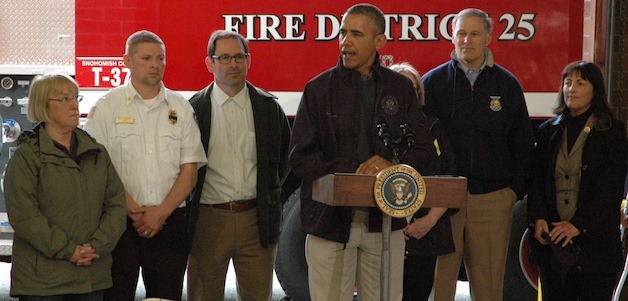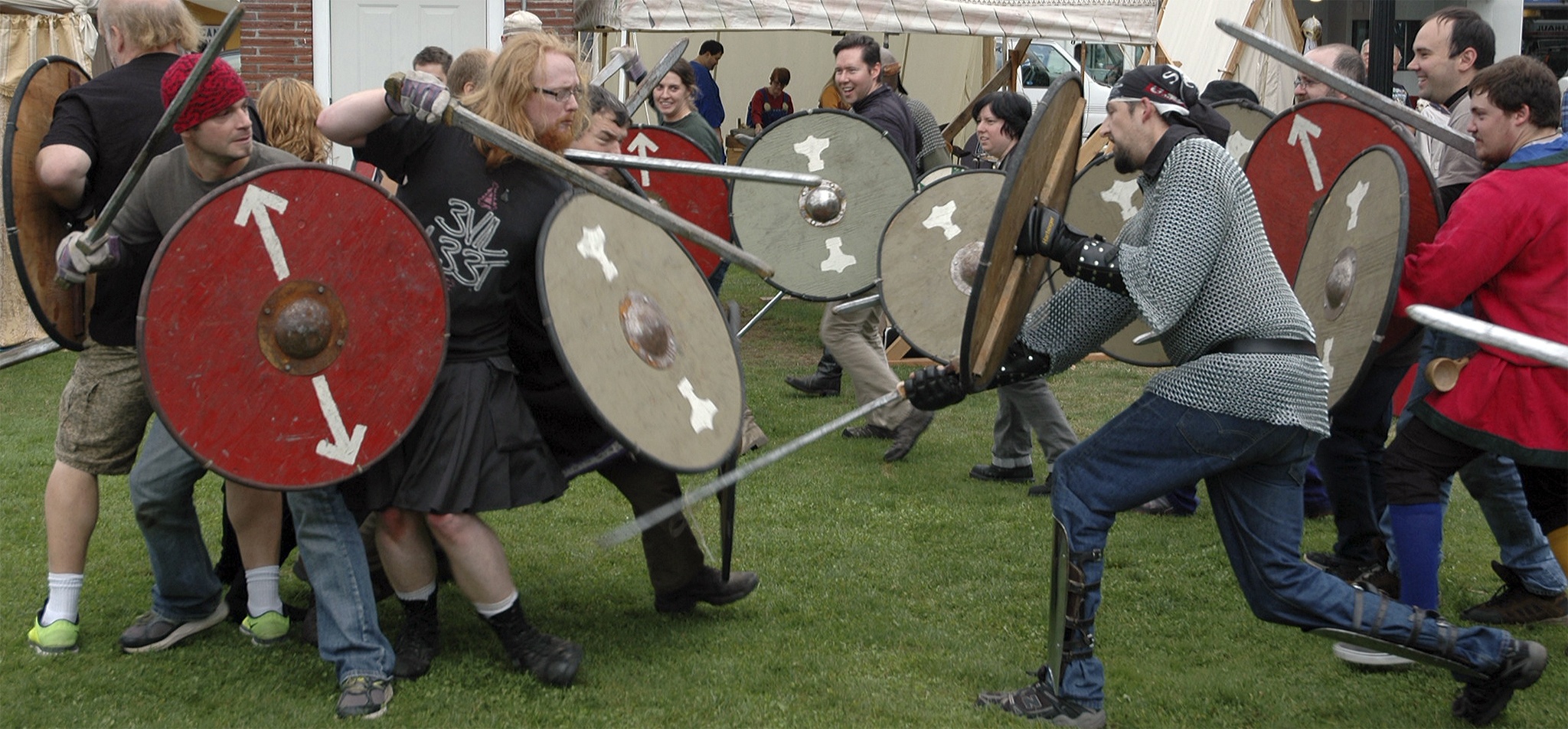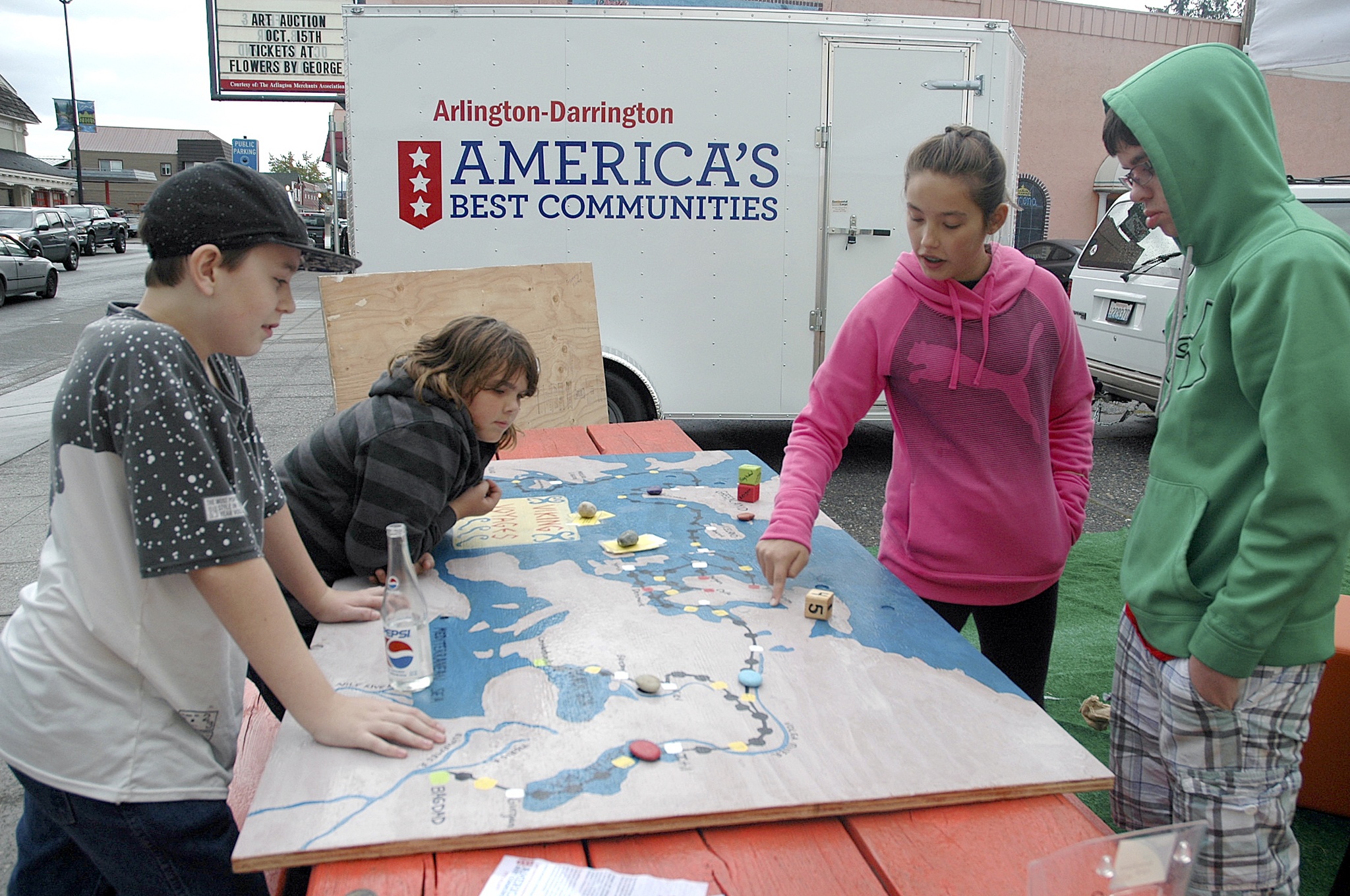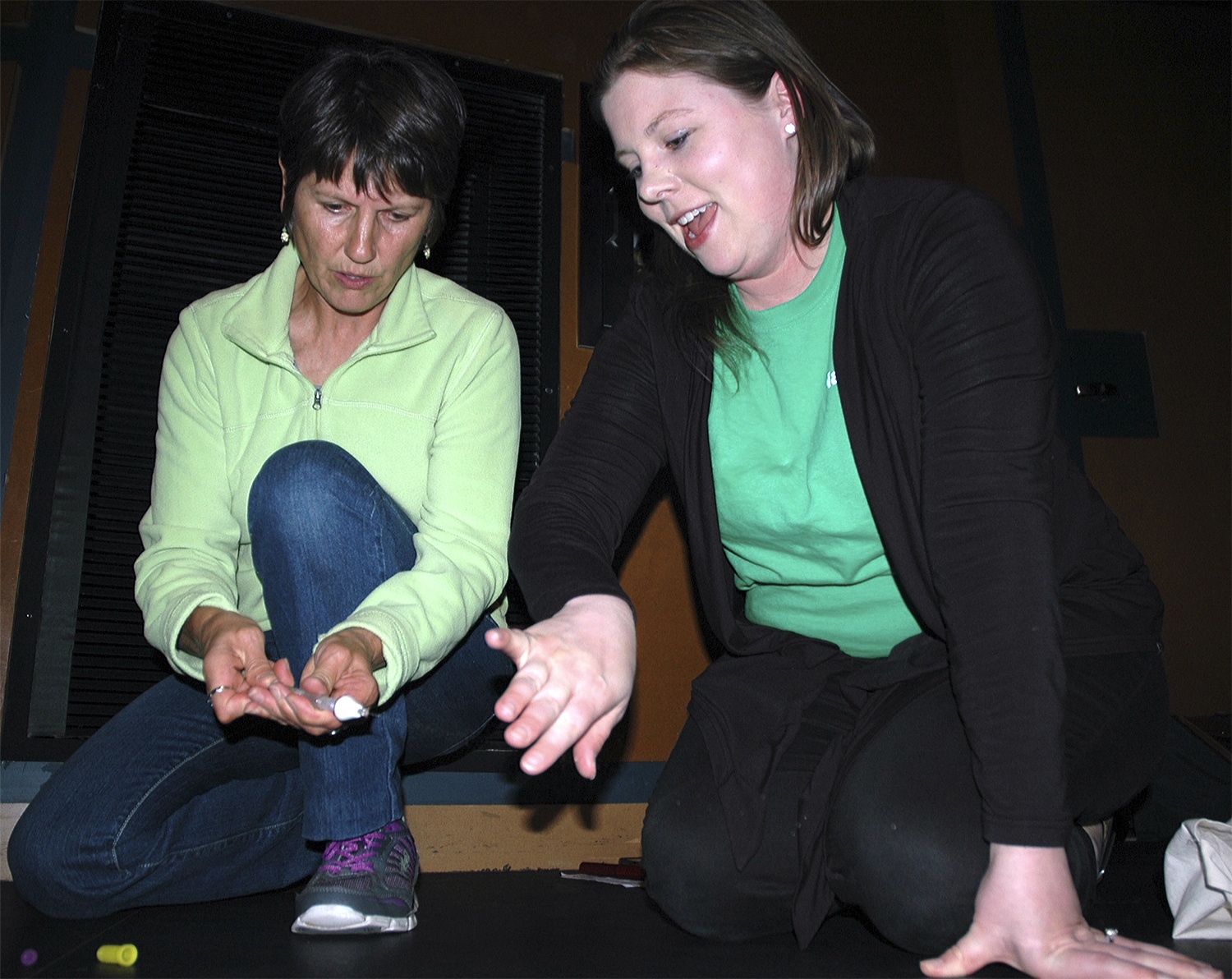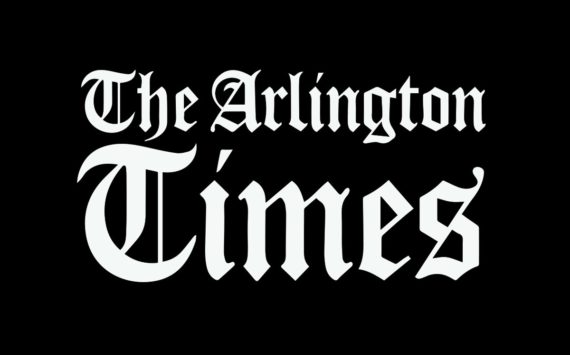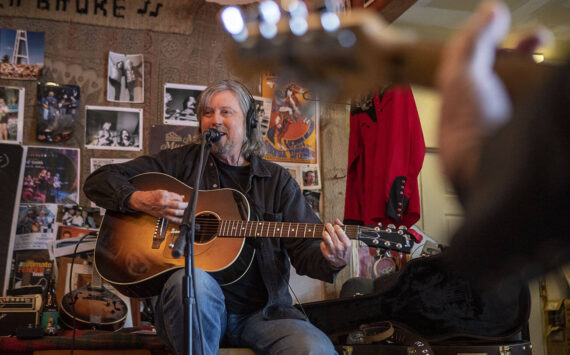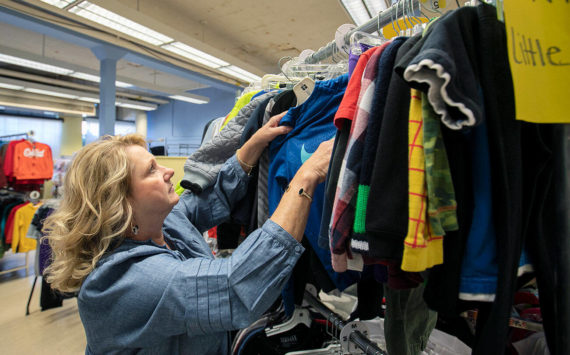OSO — President Barack Obama’s visit to the area on Tuesday, April 22, culminated in a press conference in the Oso Fire Station that afternoon, after he’d had a chance to survey the damage done by the March 22 Oso mudslide, as well as to speak with the slide’s first responders and the families of the slide’s victims.
When Obama disembarked from Air Force One at the Paine Field Airport at approximately 12:50 p.m., he was greeted by state and federal elected officials, including Gov. Jay Inslee, U.S. senators Patty Murray and Maria Cantwell, and U.S. representatives Suzan DelBene and Rick Larsen, who accompanied him to the Oso Fire Station, where he singled them out, by name, for being “relentless in making sure that Oso had the resources that it needs.”
Obama then flew over the site of the slide in Marine One, which touched down at approximately 1:30 p.m. so that he could travel from Arlington to Oso by motorcade on State Route 530, which was lined with locals who were waving and holding signs.
Obama reached the Oso Community Chapel at approximately 2:10 p.m., where he spent more than an hour conversing one-on-one with those who had lost loved ones to the slide, as well as the firefighters, police officers, and members of the search and rescue crews and the Washington National Guard whom he credited with working “around the clock to help this community recover from this devastating incident.”
As Obama entered the Oso Fire Station at approximately 3:30 p.m., he was joined by Snohomish County Executive John Lovick, Arlington Mayor Barbara Tolbert and Darrington Mayor Dan Rankin, and greeted by a crowd of approximately 75 attendees, including state Sen. Kirk Pearson, Washington State Patrol Chief John Batiste, Snohomish County Sheriff Ty Trenary, Stillaguamish Tribal Board Chair Shawn Yanity, Tulalip Tribal Board Chair Herman Williams Sr., Arlington Fire Chief Bruce Stedman, Snohomish County Fire District 21 Chief Travis Hots and John Pennington, director of the Snohomish County Department of Emergency Management.
Surrounded by signs of support from the community on the walls of the Oso Fire Station, Obama noted the immediacy with which a FEMA Incident Management Assistance Team arrived on the ground, and an emergency declaration was approved, to provide additional resources to local and state responders in the wake of the slide, which he followed by approving a major disaster declaration, to aid local residents and business owners in their recoveries, as well as local, state and tribal governments in their emergency response efforts.
“From the day of the tragedy, I’ve instructed my team to make sure that they get what they need, to make sure that the search and rescue mission is going forward the way it should,” Obama said on April 22. “Today, that work continues. There are still families who are searching for loved ones. There are families who have lost everything, and it’s going to be a difficult road ahead for them. That’s why I wanted to come here, just to let you know that the country is thinking about all of you, and have been throughout this tragedy. We’re not going anywhere. We’ll be here as long as it takes, because while very few Americans have ever heard of Oso before the disaster struck, we’ve all been inspired by the incredible way that this community has come together, and shown the love and support that they have for each other, in ways large and small.”
Obama mentioned just some of the charitable and often labor-intensive contributions of community members and complete strangers alike to those recovery efforts, from those who have donated chainsaws and rain jackets, or cooked meals for rescue workers, to those who have volunteered for 15-hour shifts of searching through mud as deep as 70 feet.
“One resident said, ‘We’re Oso. We just do it,'” Obama said. “That’s what this community is all about.”
Obama praised Oso Fire Chief Willy Harper and his fellow local responders for the burdens they’ve shouldered, by describing them as exemplars of the country’s character.
“This is family, and these are folks who love this land, and it’s easy to see why, because it’s gorgeous,” Obama said. “There’s a way of life here that’s represented, and to see the strength in adversity of this community, I think, should inspire all of us, because this is also what America is all about. When times get tough, we look out for each other. We get each other’s backs, and we recover, and we build, and we come back stronger, and we’re always reminded that we’re greater together. That’s how we’ll support each other, every step of the way.”
Obama likewise reported that the families with whom he met, whom he commended for showing “incredible strength and grace through unimaginable pain and difficulty,” also wished to extend their thanks to those first responders.
“They were deeply appreciative of the efforts that everybody has made,” Obama said. “I know that many of the first responders have heard that directly, but it doesn’t hurt to repeat that we’re very appreciative of what you’ve done.”
In the midst of this tragedy, Obama cited the valuable lessons that have been learned, through the coordinated efforts of not only local, state and federal officials, but also between those officials and the volunteer crews who have chipped in.
“I know that it required some improvisation, and some kinks getting worked out, but it was important for the family members themselves, and the community themselves, to be hands-on and participate in this process, particularly in a community like this one, where folks are hearty and know how to do things, and take great pride in being self-reliant,” Obama said. “It was important that they weren’t just bystanders in this process. They were involved every step of the way.”
Obama wrapped up his remarks by recalling one of a number of letters he’s received from Oso, Darrington and Arlington residents, this one from an anonymous firefighter.
“He pointed out how those who were operating the heavy machinery during this whole process did so with incredible care and delicacy, because they understood that this wasn’t an ordinary job,” Obama said. “This wasn’t just a matter of moving earth. This was a matter of making sure that we were honoring and respecting the lives that had been impacted.”
Aside from holding up the letter as yet more evidence of the hard work being done under difficult circumstances, as part of the slide recovery efforts, Obama lauded the letter’s author for focusing on others’ good deeds rather than his own.
“To see a community come together like this, and not be interested in who’s getting credit, but just making sure that the job gets done, says a lot about the character of this place,” Obama said. “We’re very, very proud of all of you. Michelle and I grieve with you. The whole country is thinking about you, and we’re going to make sure that we’re there, every step of the way, as we go through the grieving, the mourning and the recovery. We’re going to be strong right alongside you.”
“This is good for the morale of these citizens,” Pearson said, after Obama’s speech. “This way, they can see how much the rest of the country cares about Oso, Darrington and Arlington.”
Tolbert, who received one of Obama’s first hugs after he finished his remarks, cherished the experience of accompanying him in his chats with local families and first responders.
“It was an incredible honor,” Tolbert said. “He really bolstered their spirits, and I was thrilled and delighted to hear him commit to the continued support of this community.”
Larsen, who arrived on the scene on crutches, asserted that both he and Obama expect the recovery process to continue long after the close of the Obama administration.
“He knows that we don’t just need to be here, but that we need to be here for a long time, beyond even his own presidency,” Larsen said. “Decisions will need to be made about what will be done with this land, and with State Route 530, because if it can’t be cleared, then we’ll need a new right-of-way.”
